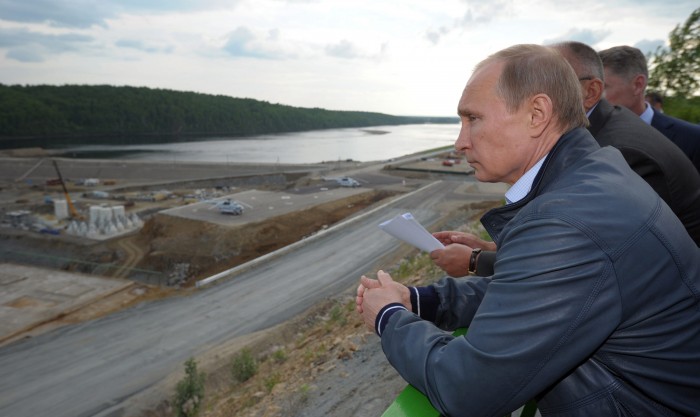Russia Tells the UN It Wants to Produce More Renewable Energy

Don’t look now, but Russia could get greener—and it has nothing to do with climate change melting the Siberian permafrost.
In a country known for deriving a huge amount of its wealth and economic activity from state-owned oil and gas companies, it may come as a surprise to hear that president Vladimir Putin has been speaking favorably about clean energy lately. The country’s energy ministry also endorsed a recent report from the International Renewable Energy Agency that suggested that Russia has plenty of potential for developing renewables.
There’s certainly plenty of room for improvement. At the moment, renewables account for only about 3.6 percent of Russia’s energy consumption (paywall). By comparison, the U.S., which is itself a laggard compared to many countries, derives about 10 percent of the energy it consumes from renewable sources.
According to an article in the Financial Times that cites the IRENA report, Russia could expand its renewable portfolio up to 11.3 percent of consumption by 2030.
That would be far from world-beating, but would still require about $15 billion a year in investments, according to IRENA. Even assuming Putin and his administration are serious about backing up their words with deeds, the financial and political might of the fossil fuel giants Gazprom and Rosneft—which are essentially arms of the Russian government—could make ramping up renewables difficult.
Russia also lacks a national power grid, so it wouldn’t be able to transport energy generated by, say, wind or solar outside of the regions in which they are generated. This is something that the U.S. struggles with as well, though a revamped grid in Texas has proven that large infrastructure investments can help renewables flourish.
Russia, like the U.S. (for the moment, anyway), is a party to the Paris climate agreement, with a pledge to keep its greenhouse gas emissions at least 25 percent below 1990 levels by 2020. While it hasn’t been terribly transparent on how it plans to do that—or outlined any plans for further cuts—it has said it is cleaning up emissions from flaring at oil and gas fields. And in statements made to the United Nations ahead of climate talks later this week, Russian officials wrote that their country was planning a more than tenfold increase in non-hydroelectric renewables by 2035.
(Read more: Financial Times, “The One and Only Texas Wind Boom”)
Keep Reading
Most Popular
How scientists traced a mysterious covid case back to six toilets
When wastewater surveillance turns into a hunt for a single infected individual, the ethics get tricky.
The problem with plug-in hybrids? Their drivers.
Plug-in hybrids are often sold as a transition to EVs, but new data from Europe shows we’re still underestimating the emissions they produce.
What’s next for generative video
OpenAI's Sora has raised the bar for AI moviemaking. Here are four things to bear in mind as we wrap our heads around what's coming.
Stay connected
Get the latest updates from
MIT Technology Review
Discover special offers, top stories, upcoming events, and more.